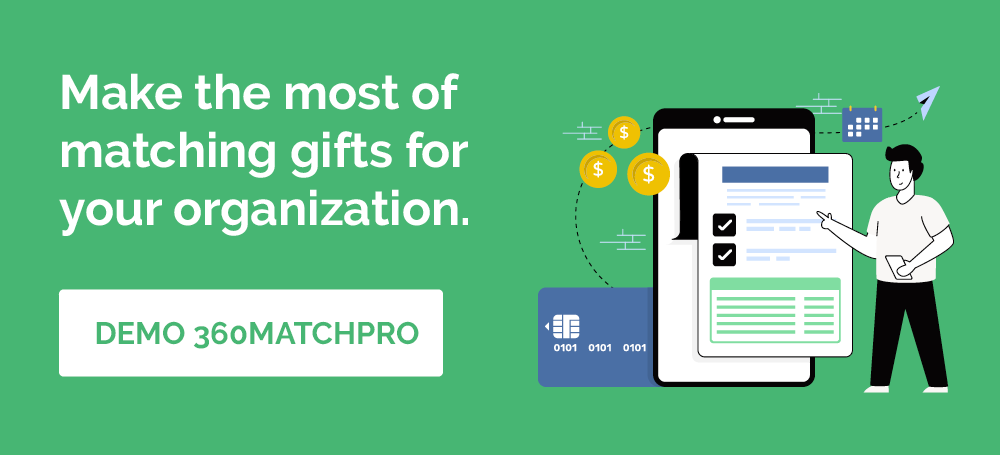Winning Workplace Giving Strategies & How to Leverage Them
According to corporate philanthropy studies, businesses provide over $29 billion to nonprofits each year—and the number continues to grow. Much of that funding comes from a smaller subcategory of corporate philanthropy known as workplace giving strategies, in which a company’s employees play an active role in giving.
There’s a lot that nonprofits can do to better position themselves to leverage this source of revenue. And it starts with building a solid foundation of knowledge regarding the kinds of workplace giving programs available to them. That’s why, in this guide, we’ll cover the following:
- Top 10 Workplace Giving Campaign Types to Know
- How to Make the Most of Workplace Giving Opportunities
Workplace giving provides value to each party involved—including your organization, the companies that support your efforts, and even individual donors. It’s what we often refer to as a “win-win-win” situation. Let’s dive in so you can start leveraging corporate giving opportunities!
Top 10 Workplace Giving Campaign Types to Know
Understanding common examples of workplace giving programs can help position your team to best identify and pursue available opportunities. We’ve compiled a list of ten of the most popular campaign types here.
1. Employee Matching Gifts
Employee matching gift programs are one of the most popular examples of workplace giving—both from a corporate and donor perspective. When a company offers this initiative, they essentially agree to match donations made by their employees to qualifying nonprofit groups at a certain ratio, such as 1:1 or 2:1.
Here’s an example of how it works:
- An individual contributes to their favorite charitable organization by donating $50.
- The donor requests a match from their employing company.
- The employer reviews the match submission, ensures it aligns with predetermined matching criteria, and approves the request.
- The employer makes a matching donation of $50 to the same cause, totaling $100.
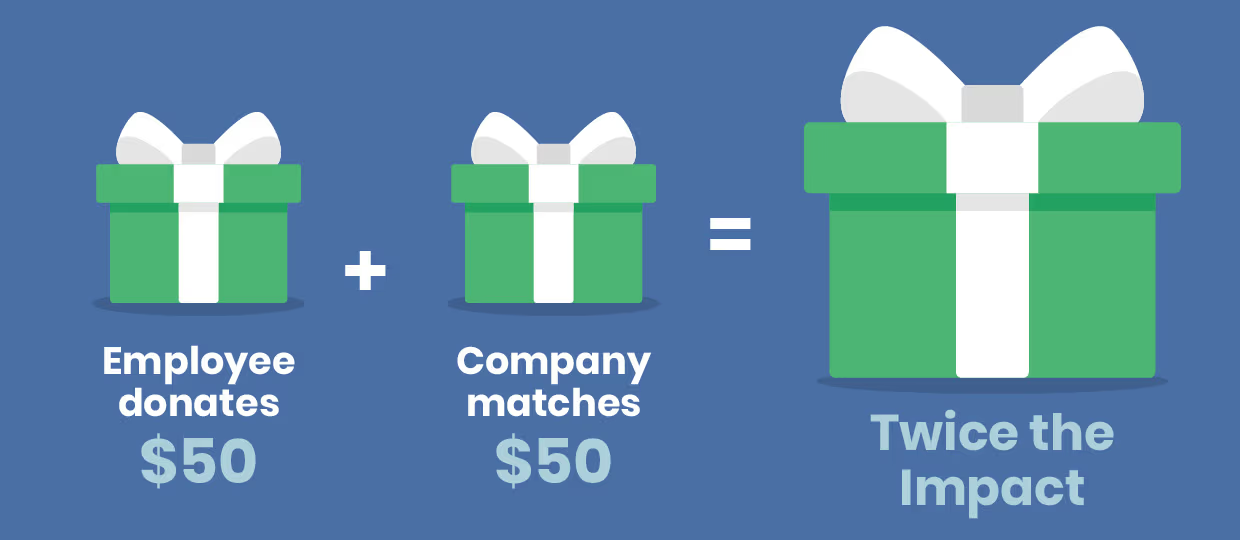
Currently, more than 26 million individuals work for companies with matching gift programs, which includes over 65% of Fortune 500 companies and 51% of the Russell 1000. Not to mention tens of thousands of small and mid-sized businesses as well.
Because of matching gifts’ popularity and how straightforward the process is, matching gifts is the easiest workplace giving strategy for nonprofits to leverage. You can make it even easier for your donors to take advantage of by using matching gift software like 360MatchPro, which allows donors to find their employer’s matching gift information right from your donation page. Plus, new auto-submission functionality lets donors request a match just by entering their company email.
|
|
2. Fundraising Matches
Fundraising match programs are fairly similar to employee matching gifts, and they might even be lumped together under a single workplace giving category. But there’s a key difference that makes this type of initiative stand out. Employee donation matches are made solely for donations contributed by a company’s employees. Fundraising matches, on the other hand, also include donations made by others to an employee’s peer-to-peer giving campaign.
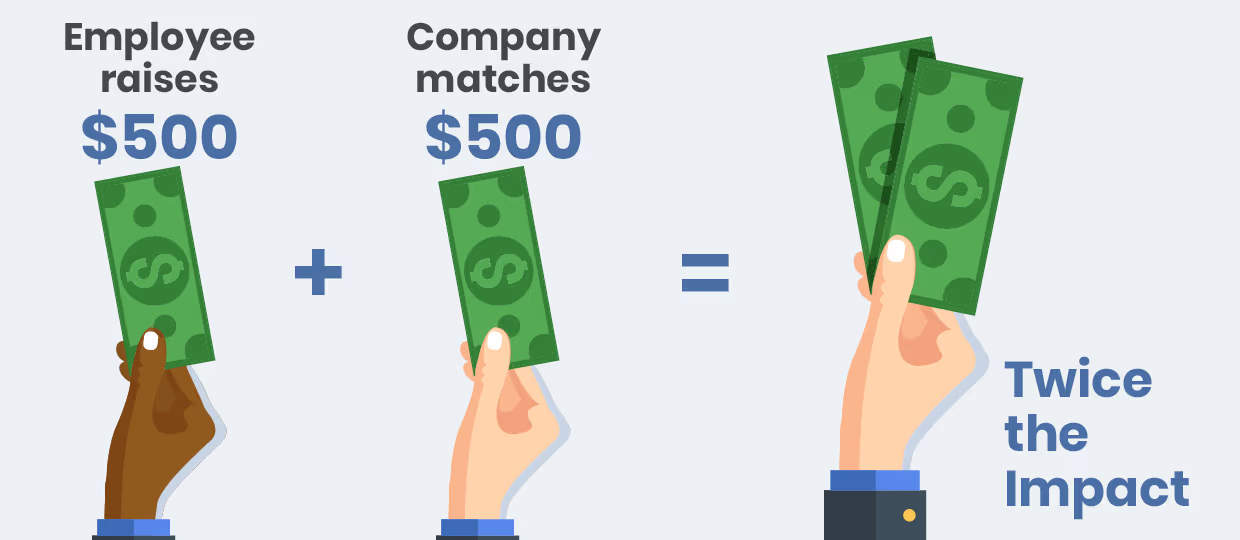
For example, let’s say John Doe of Company A is participating in a sponsored run/walk event for a local nonprofit. He raises over $500 in pledges on behalf of the organization from friends, family, and more. If the company offers a fundraising match program, they’ll match all of those donations to the nonprofit—not just ones made by John Doe himself.
|
|
3. Dollars for Doers
Dollars for doers, also known as volunteer grants, are another popular type of corporate matching program. But instead of matching financial donations, participating companies provide monetary grants according to the number of hours an employee devotes to volunteering with a nonprofit cause.

In terms of scope, recent corporate giving research reports that more than 40% of Fortune 500 companies offer volunteer grants. Not to mention, over 85% of the top matching gift companies also provide dollars for doers opportunities for their employees. And of those that do provide volunteer grants, 80% offer between $8 and $15 each hour an employee volunteers.
|
|
4. Charitable Giving Stipends
Charitable giving stipends (sometimes referred to as “charitable gift cards”) are a unique form of workplace giving program. This offering typically involves companies allotting a certain amount of funding to individual employees, who can contribute the dollars to the organizations of their choice.
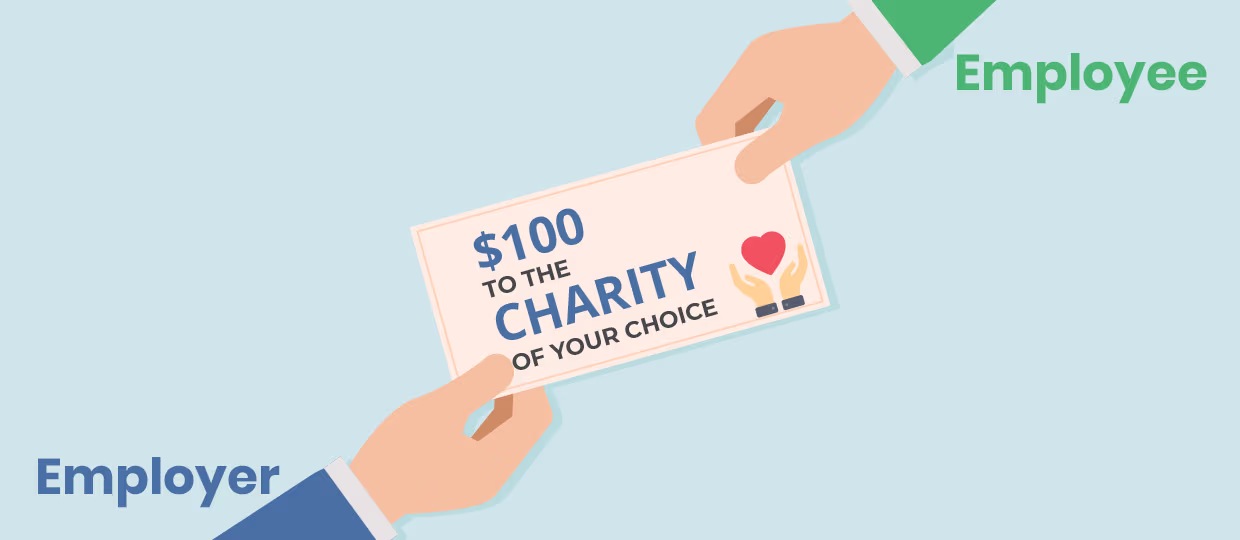
This can be done in a few different ways. While some companies might provide actual gift cards that can be used to support a range of preapproved nonprofit causes, others add the funds directly to an individual’s account within the company’s employee giving portal.
Employers can also choose whether giving stipends are an automatic, yearly benefit for team members or offer them as a way to reward or incentivize employees for other activities.
|
5. Annual Giving Campaigns
Annual employee giving campaigns are another popular type of workplace giving. Occurring most often on a yearly basis, participating companies organize an internal fundraising campaign, typically in partnership with a specific nonprofit cause.

Employees are informed about the campaign effort and typically encouraged to get involved through some sort of strategic incentive. There may even be gamification involved, such as pitting teams, departments, or even branches against one another to see who can bring in the most funding for the organization receiving support.
|
6. Disaster Relief Efforts
Disaster relief campaigns are a specific type of workplace giving opportunities organized in response to emergency events. Often taking place after natural disasters like hurricanes, tornadoes, fires, and floods, companies and their employees agree to raise funding dedicated to providing relief for those affected.
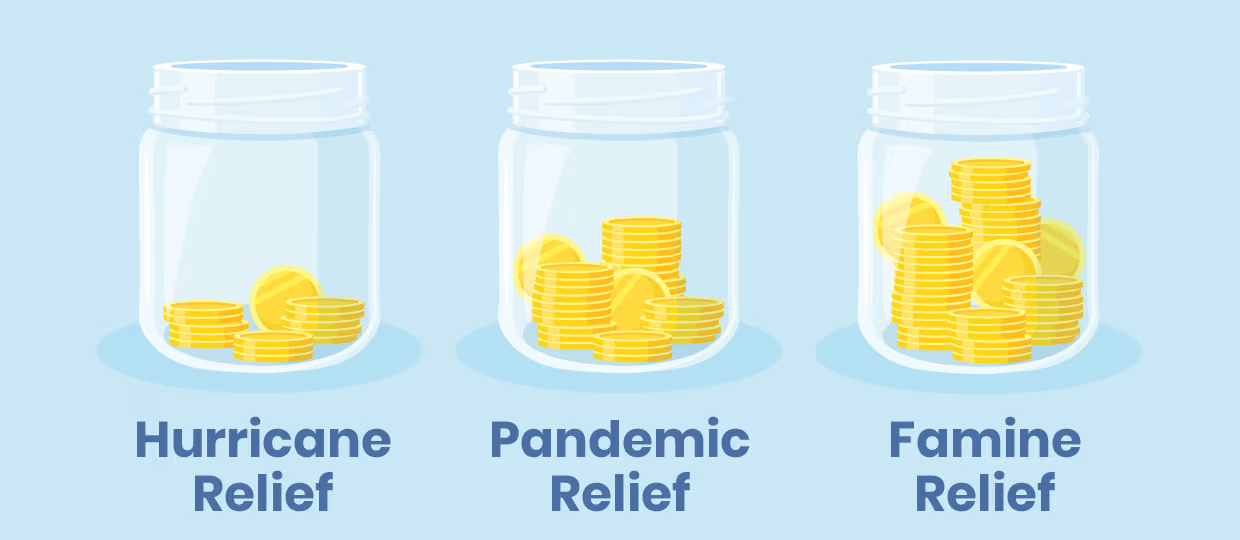
This type of fundraising effort is generally hosted as a critical response following a significant occurrence, the urgency of which generally produces grand results for on-the-ground organizations.
|
|
7. In-Kind Donations
In-kind donations are a specific type of nonprofit gift, essentially comprising anything other than a monetary contribution. This often includes goods and services, including tangible commodities like school supplies or technological equipment, and professional services like graphic design, copywriting, and more.
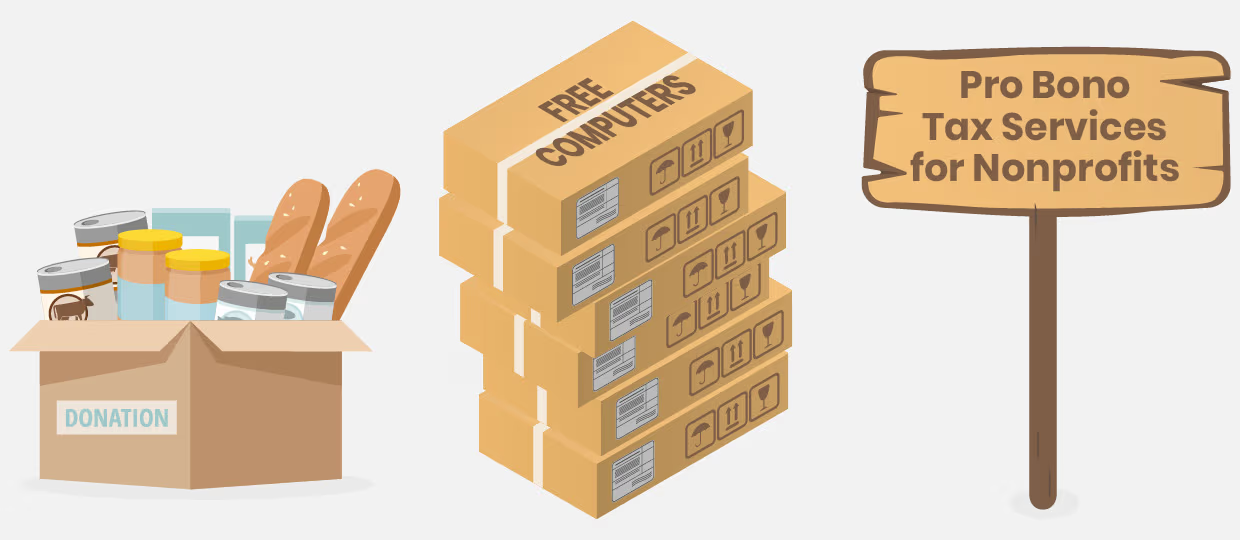
In terms of workplace giving initiatives, in-kind donations can be involved in a few key ways. First, a company might host an in-kind donation drive—such as a canned food or clothing drive—and encourage employees to participate by bringing their own donations to give.
On the other hand, an employer might provide the goods or services (e.g., a computer manufacturer offering free laptops), allowing individual team members to direct the specified gifts-in-kind to their favorite nonprofit organizations.
|
|
8. Paycheck Deductions
Most fundraising organizations understand the benefits of recurring donations. What some don’t know, however, is that payroll deductions can be a significant source of this type of funding.
In terms of workplace giving strategies, payroll deductions are donations that flow directly from a supporter’s paycheck. While some donors may choose to do so on a one-off basis, many opt into recurring weekly, biweekly, or monthly giving programs this way.
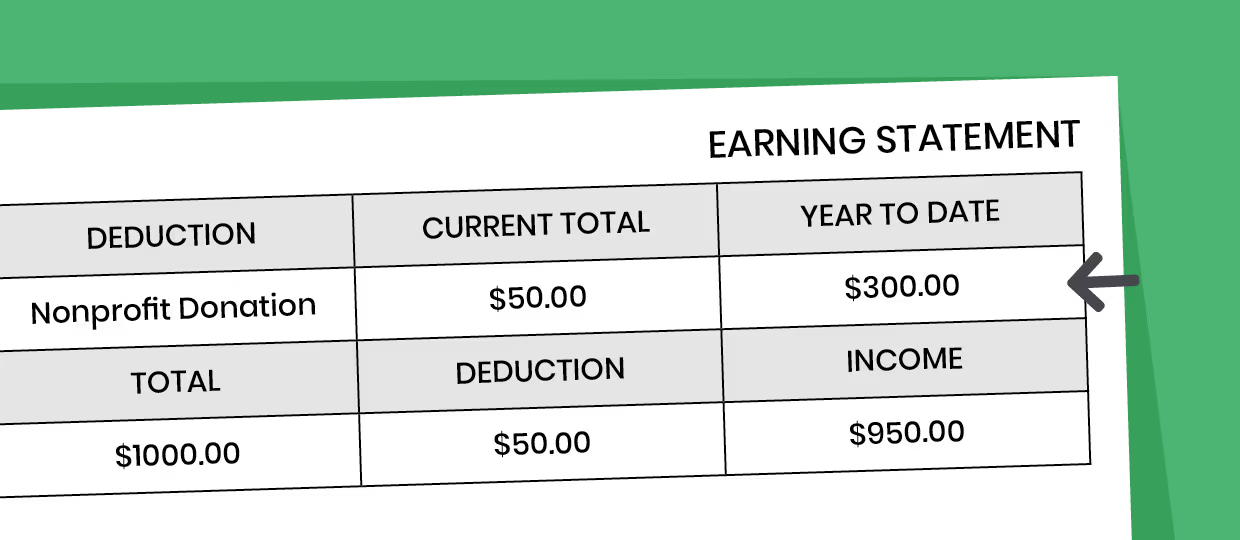
It’s typically a quick and easy process for a company’s employees to get involved, and the receiving organizations tend to see steady flows of donations through automatic payroll giving.
|
|
9. Volunteer Time Off
Most companies offer some type of paid time off, or PTO, for employees. Volunteer time off, or VTO, is one form of this benefit that is used specifically to encourage corporate employees to dedicate their time to nonprofit causes.

VTO is typically provided above and beyond any existing vacation or sick time and can range from a few hours to multiple weeks per employee on a yearly basis. Employees request VTO from work, then spend that time volunteering with a charitable organization—all while getting paid to do so!
|
10. Group Volunteer Events
One final workplace giving program to note is group (more specifically, corporate) volunteer events. Many employers organize volunteer opportunities in tangent with local organizations, and some are even offering virtual experiences that allow team members to get involved from afar.

These types of events can take place either during or outside of typical work hours, and common activities can include working with environmental cleanups, soup kitchens, and more.
Volunteering can be an excellent team bonding experience that can serve as an effective icebreaker activity as well. Not to mention, the nonprofit that hosts the volunteer group benefits from the additional service!
|
How to Make the Most of Workplace Giving Opportunities
Now that you know which kinds of corporate giving programs to keep an eye out for, consider these tried-and-true practices for making the most of the opportunities.
Establish goals and create a detailed plan to get there.
Like any new project, one of the first steps you’ll want to take when diving into key workplace giving strategies is to set goals. These should be specific and measurable objectives that allow your team to pursue impact effectively.
And you’ll need a detailed plan of action to get there.
Take a look at where your team currently stands in terms of workplace giving revenue. How much funding does your nonprofit receive from matching gifts, volunteer grants, and more? Then, set tangible and ambitious goals to stretch those numbers significantly further in each channel.
Consider this sample workplace giving plan:
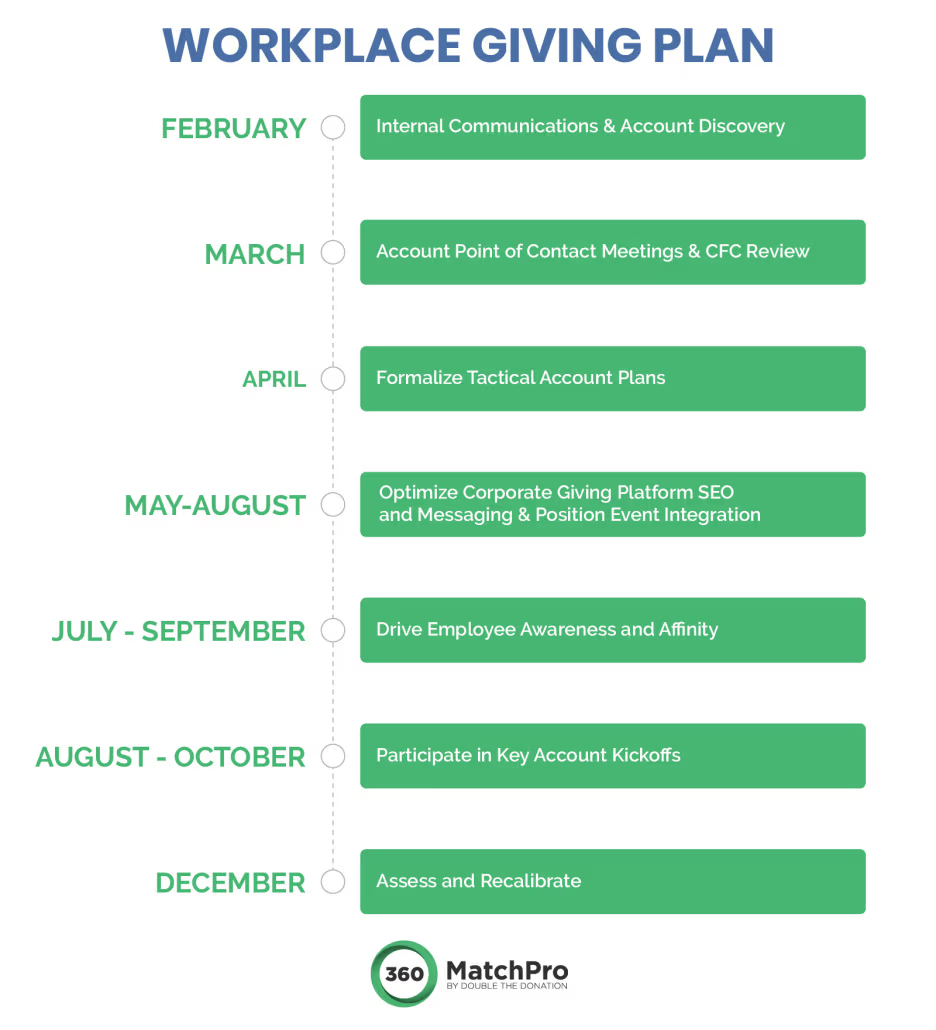
Feel free to build off this template, knowing that you can and should adjust the strategy to best fit your organization’s needs.
Plus, keep in mind that existing donors can be some of your most valuable assets in pursuing workplace giving opportunities. Individuals who already work for companies with philanthropic programs can get involved on behalf of your organization. Meanwhile, supporters whose companies do not yet offer workplace giving initiatives can advocate for such programs to their employers.
Stay on top of top companies and program changes.
We always recommend getting familiar with top corporate giving companies. This allows organizations to identify the best opportunities for matching gifts, volunteer grants, and more. Not to mention, it ensures they can relay the information to eligible donors.
One thing to keep in mind, however, is that workplace giving offerings are not set in stone. And staying on top of program changes can be a huge help as your team continues to pursue available engagements.
For example, here are a few changes that we’ve seen in the last few years:
- LinkedIn raised its matching gift maximum from $10,000 to $15,000 per employee.
- Walmart changed its payroll deduction campaign from Strategic Choice (13 NPOs) to Fully Open.
- Murphy Oil Corporation reinstated its employee matching program with a 1:1 match ratio for most NPOs and 2:1 for educational institutions.
- Kimray Inc. reinstated its employee matching program and increased its match max to $2,000 per employee.
So what does this mean? Just because a donor isn’t eligible for a corporate philanthropy program at one point doesn’t mean that it will remain their status forever. Staying on top of popular corporate philanthropy examples and remaining connected with programmatic changes will ensure you make the most of workplace giving.
Picture this: Business A has reported the launch of a new workplace giving initiative. You know that Donors B and C work for that company. Consider reaching out and encouraging them to get involved!
Build out impactful corporate relationships.
When it comes to corporate philanthropy and workplace giving, the relationships your organization has with companies in your network matter. And again, your supporters can be some of your greatest resources.
If you’re not already, begin making an effort to collect donor employment information using your donation forms, corporate giving software, or even employer appends.
Then, identify which donors work for which philanthropic companies. Shared interests—such as overlapping donors and employees—can help your team get its foot in the door to develop corporate relationships.
Check out these sample messages an organization might send to a prospective corporate partner:
“Our organization has received 620 donations and $28,000 match identified dollars from your company in the past year. We see that you are dedicated to charitable giving, and it seems that we have a lot in common already! Are you interested in partnering with our team as a corporate sponsor for our upcoming fundraising event?”
“Hi! We see that more than 35 dedicated donors to our nonprofit are employed by your company. Unfortunately, however, it looks like you don’t offer a matching gift program. Because we already have so much in common with us, we were hoping you might be interested in developing a mutually beneficial corporate sponsorship.”
Even if a company is not currently offering workplace giving programs for their employees, reaching out and pitching partnership opportunities can go a long way. Remind them that this partnership is mutually beneficial. After all, 70% of Americans believe it’s important for companies to improve their communities, and partnering with nonprofits is a great way to do that.
If they’re not ready to launch a full-blown program, ease them into corporate giving by launching a gift-matching challenge. With this initiative, they’ll promise to match all donations within a certain time frame or up to a certain amount to your nonprofit. They can get a taste of the benefits of corporate philanthropy without making a long-term commitment.
Pursue operational efficiencies with automation.
Recent studies by Nonprofits Source indicate that 80% of nonprofits report difficulty building strong corporate partnerships and workplace giving strategies. One of the most critical roadblocks has to do with limited staff and resources at their disposal.
The solution? Operational efficiencies.
More specifically, pursuing operational efficiencies by automating key processes involved in corporate fundraising. And that’s exactly what 360MatchPro by Double the Donation is designed to do.
This includes:
- Collecting employment data via donation forms, confirmation screens, follow-ups, and email domain screening methods to identify workplace giving opportunities;
- Triggering personalized outreach, including post-transaction follow-up emails complete with company-specific workplace giving program information;
- Enabling auto-submission functionality for donors, removing key submission roadblocks and driving more eligible matches to completion;
- Tracking workplace giving opportunities, analyzing aggregated matching gift metrics and other data points;
- Integrating seamlessly with your online donation tools and CRM to produce a comprehensive technology ecosystem.
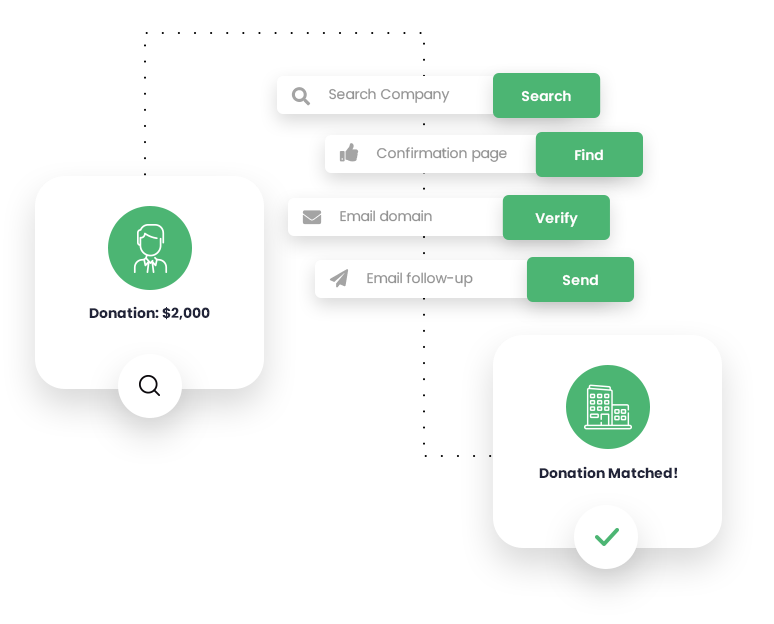
Plus, 360MatchPro allows you to take automation even further to increase your matching gift revenue by enabling our innovative auto-submission functionality for donors.
With auto-submission, donors don’t have to go through the process of finding the correct match request forms, filling them out, and sending the forms to their employer in time for your organization to receive the funds. Instead, all they have to do is make their donation and enter their corporate email address. 360MatchPro takes care of the rest!
Auto-submission removes key submission roadblocks for donors, ultimately driving more eligible matches to completion and getting more funds to your organization.
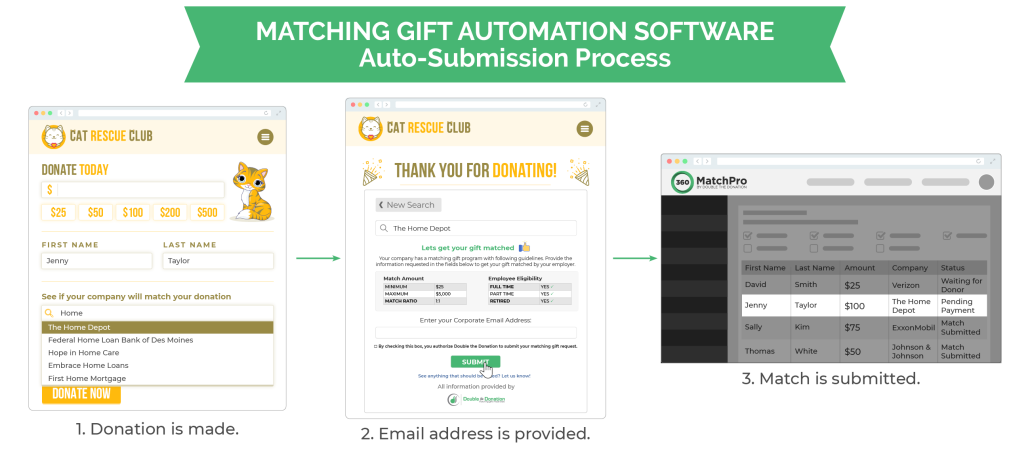
Automation and overall efficiencies allow organizations to do more to seek workplace giving opportunities with less time and effort required. In the end, teams like yours will see greater impact for your cause, your donors, and the communities you serve.
Final Thoughts
With the right tips and tricks in your toolkit, your organization will be all set to maximize workplace giving opportunities for your cause. And since more than 39% of companies report planning to expand their workplace giving programs in the next two years, now is the perfect time to get started building out your plan for success.
In the end, you’ll have improved corporate relationships, elevated donor engagement, and increased funding to best serve your communities.
Want to dive deeper into key workplace giving strategies to raise more for your organization through the source? Check out these additional materials to keep learning:
- Corporate Giving: How to Raise More for Your Cause. Explore additional ways your nonprofit benefits from corporate giving programs like these. Plus, consider tools that can help you collect even more funding.
- Matching Gifts: Your Guide to Growing Your Revenue with Automation. Learn more about corporate matching gifts and how you can set your organization up for success with automation tools. These tips will help!
- Matching Gift Databases: Our Comprehensive Guide. This guide walks through everything your nonprofit needs to know about matching gift databases and how they can help you leverage this workplace giving strategy.

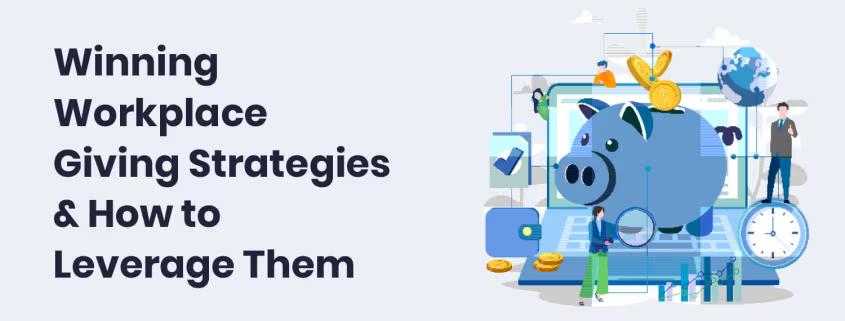




 Corporate Spotlight:
Corporate Spotlight: 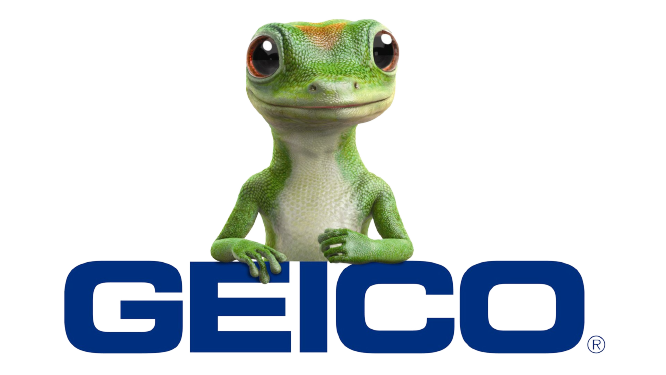 Corporate Spotlight:
Corporate Spotlight: 
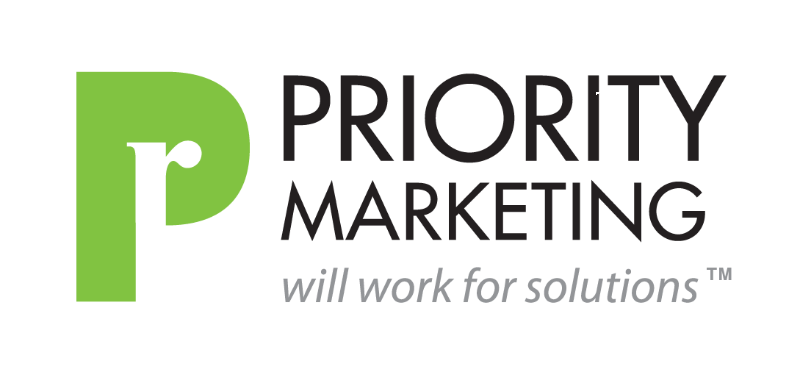

 Corporate Spotlight:
Corporate Spotlight:  Corporate Spotlight:
Corporate Spotlight: 
